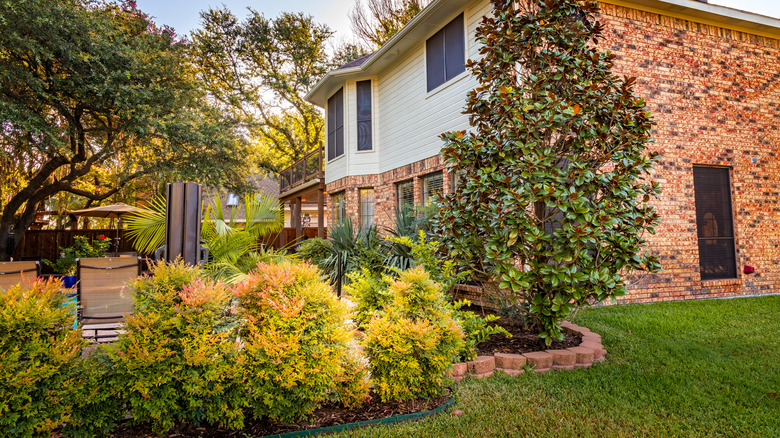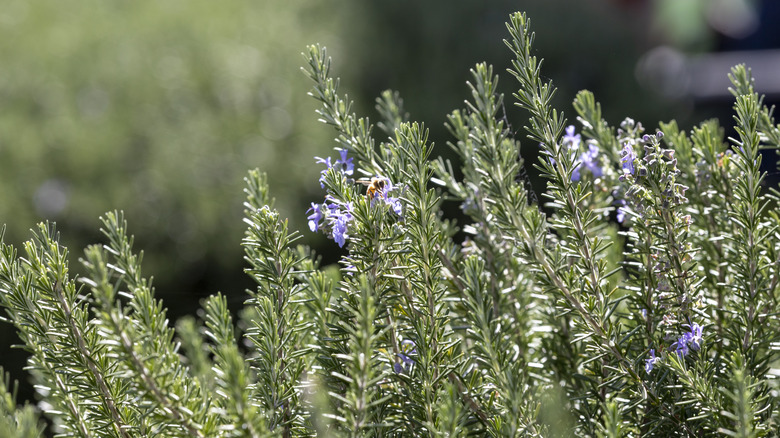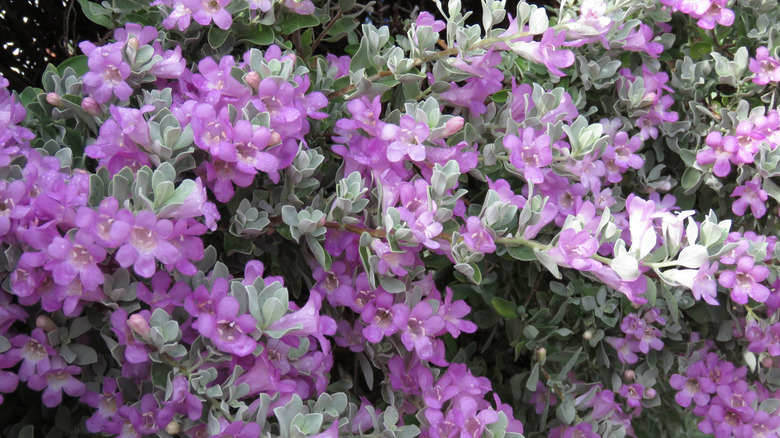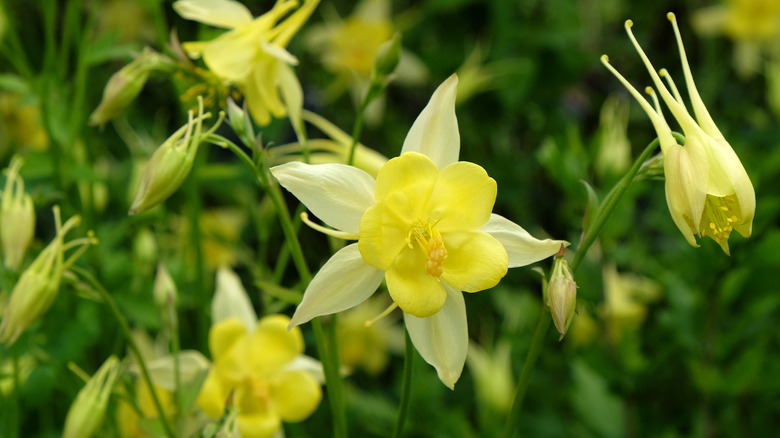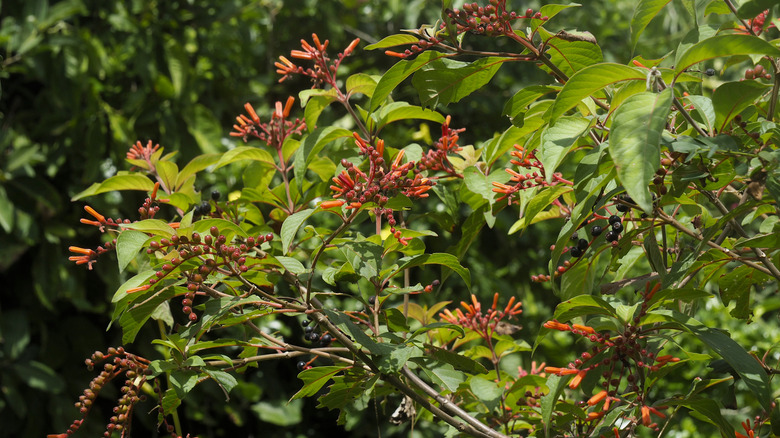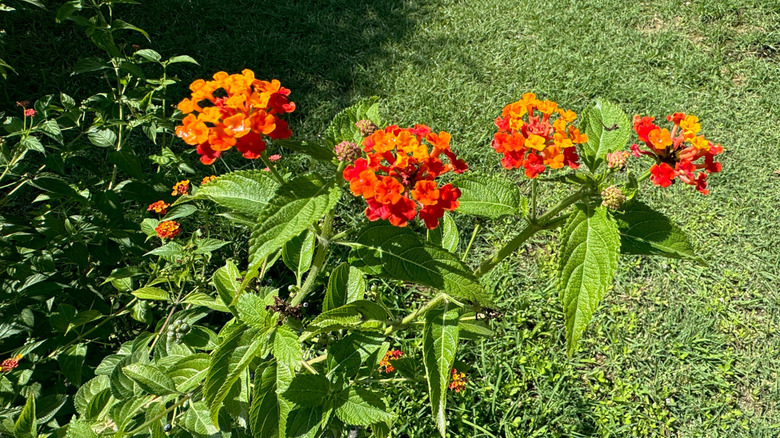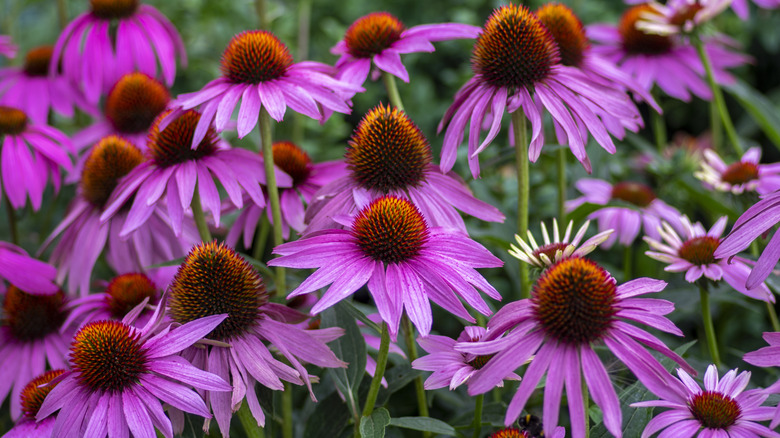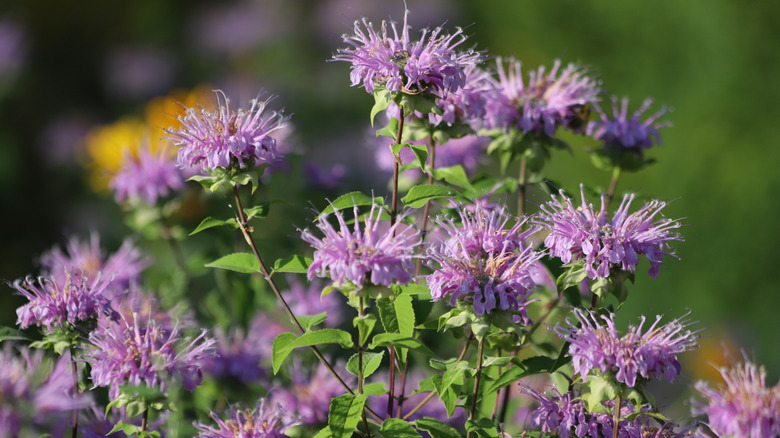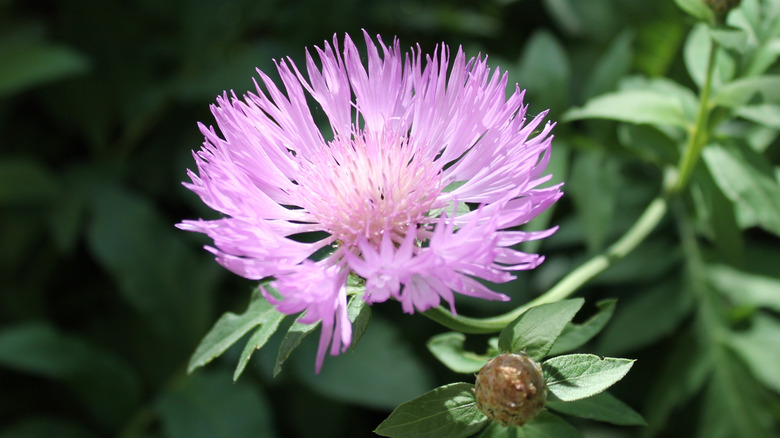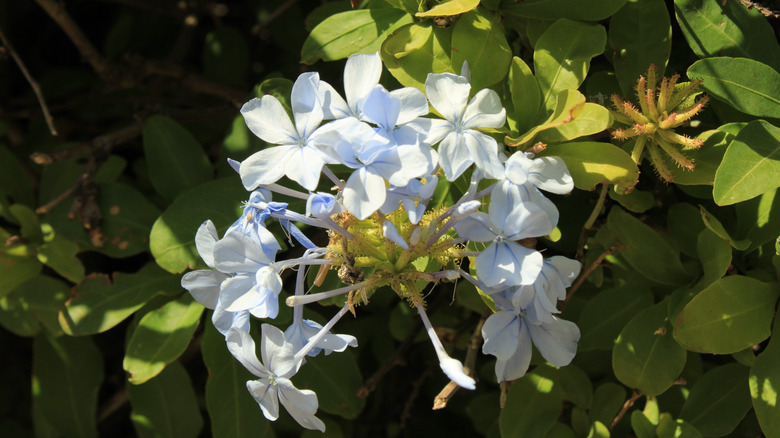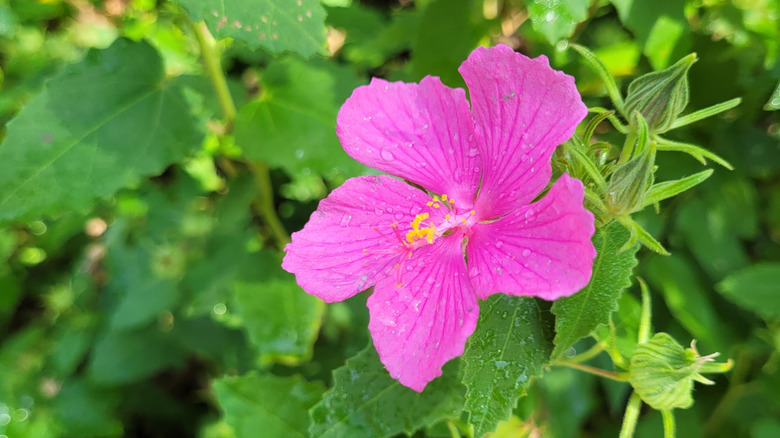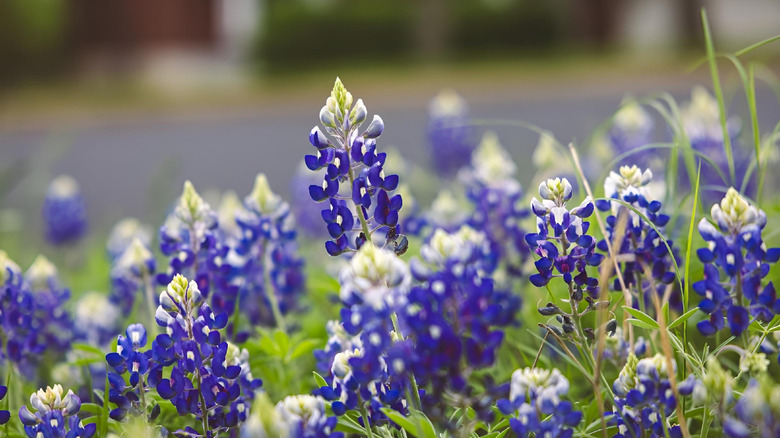11 Of The Most Durable, Heat Tolerant Plants You Can Grow In Texas
At first blush, the hot, dry, sunny weather in Texas can make it sound nigh impossible to cultivate a flourishing garden. Fortunately, that's far from the case, as there are hundreds of plants that thrive in those extreme conditions. These durable, heat-tolerant plants don't just add beauty to landscapes; since many of these flowers and shrubs are native to Texas, planting them is helpful for the entire ecosystem. Native wildflowers attract local fauna like birds and pollinating insects and help households conserve water. In many cases, planting local flora that is resistant to heat means a garden that's generally easy to care for.
Whether you are a native Texan or a newcomer looking to adapt to the gardening scene, there is a tough plant out there that will suit your needs. From low maintenance, sweet-smelling shrubs to towering container plants, flowers like lantana, coneflower, plumbago, and more will be right at home in any Texas garden.
Rosemary
Rosemary (Salvia rosmarinus) is hardy in the warm climates of USDA zones 7 through 10, where it's popular for its durability and iconic aroma. Plus, keeping a rosemary shrub around will give you constant access to its leaves so you can use them to zhuzh up homemade meals. Rosemary grows best with infrequent watering in loose soil and full sun, making it a good choice for rock gardens. There are several varieties of rosemary out there, but Texas gardeners should look for cultivars like 'Arp,' 'Golden Rain,' and 'Pine Scented,' all of which are well-suited for growing in the state's climatic and soil conditions.
Texas sage
Native to south Texas and growing in zones 8 to 10, Texas sage (Leucophyllum frutescens), also known as Texas barometer bush, is a drought-tolerant shrub that thrives in the intense southwestern heat. Texas sage requires little more than well-draining soil and the occasional rainfall, and, in fact, will suffer if given too much water. With its growing conditions met, the perennial will grow hundreds of white or pink flowers amongst its fuzzy, frosted, silver foliage. This plant can grow up to 8 feet high and 6 feet across, so it works well as a natural wall or a privacy screen.
Golden columbine
Many of the dozens of flowers in the columbine genus (Aguilegia spp.) do well with heat and dry soil, but the best choice for Texas gardens is golden columbine (Aguilegia chrysantha). It's hardy throughout zones 4 to 9, so long as it has well draining soil and the occasional rainfall. Even though golden columbine is super heat tolerant, it doesn't do well with direct sunlight, so plant it in a place that will receive some shade. As its name implies, this plant produces elegant gold flowers, as well as a thatch of bushy green leaves.
Firebush
Firebush (Hamelia patens) is native to Florida, but it's hardy in parts of the country falling under zones 8 to 11, including Texas. Once fully grown, firebush is resistant to heat and drought. It isn't picky about soil quality or texture, and once established, is incredibly low maintenance. It's another large, full, shrubby plant dotted with eye-catching flowers; in this case, uniquely thin, tube-shaped, fiery red blooms. Commonly referred to as the hummingbird bush, due to its ability to attract the little fliers, a firebush will also attract butterflies to your garden and generally fill it with a lot more color.
Texas lantana
While largeleaf lantana is invasive, its sibling, Texas lantana (Lantana urticoides), is a native plant that brings bright bursts of orange and yellow to sun-soaked gardens. To help this lantana blossom in hardiness zones 8 to 11, plant it loose soil (the lower quality the better) and only water it when conditions get extremely hot and dry. Texas lantana is a large-growing shrub that can flourish as a landscaped shrub or natural hedge and is one of many stunning plants that will thrive in containers in full sun.
Coneflower
The one-of-a-kind shape of a coneflower (Echinacea spp.) makes it one of the most iconic wildflowers around, and the purple coneflower (Echinacea purpurea) is arguably the most popular species. Coneflowers are native across the United States and are hardy in zones 3 to 8 — a range that includes the northern half of Texas. It's a reliable, adaptable flower that can grow in any type of soil and full sun. Additionally, coneflowers tolerate many environmental issues, like drought, heat, and high humidity. These perennials can act as a border or cover a meadow in color.
Wild bergamot
Wild bergamot (Monarda fistulosa), also known as bee balm, is hardy in zones 3 to 9, where it makes a perfect addition to native herb gardens. It is tolerant of drought and heat, so as long as you water it regularly, this perennial will thrive. Bee balm can grow in full or partial sun and withstands poor soil conditions readily. Along with adding a splash of lavender color to landscapes, wild bergamot also fills the air with its citrus-like, fresh aroma. Bergamot leaves can also be steeped into a tea.
Basket flower
The whimsical look of puffy basket flowers (Centaurea americana) are perfect for adding visual interest to any Texas garden. Basket flowers need very little help in order to flourish in hardiness zones 3 to 9 and can do so in a range of soil and sun conditions, as well as in extremely dry or hot weather. These wildflowers can grow to be up to 6 feet tall and emit an enticing aroma that resembles honey. If a nice-smelling garden is your priority, plant basket flowers next to climbing plants that will also fill your garden with heavenly scents.
Plumbago (some species)
Plumbago flowers are generally well-suited to the Texas climate, but species like cape plumbago and Mexican plumbago are especially good choices for gardens in the Lone Star State, with hardiness ranging between zones 8 and 11. Among other parts of the U.S., Mexican plumbago is native to Texas, where it can be found in the southwestern region's hot climate. While it can tolerate dry soil and periods of drought, plumbago still appreciates a bit of shade and regular watering. Most plumbago species grow as medium-sized shrubs, and make for a lovely border or cover for boring areas of the yard.
Rock rose
The pink, shrubby rock rose (Pavonia lasiopetala) offers the perfect way to add color and verticality to flower gardens. It can grow in soil comprising anything from sand to clay, as long as it's loose and dry. Growing with little water and varying amounts of sun in hardiness zones 8 to 11, rock rose is durable and flexible. Rock rose is resistant to drought, cold, and heat, and is perfect for landscaping as either a border or a star player. As a Texas native, it's easy to grow this beautiful rose from seed with these tips and tricks.
Texas bluebonnet
No list of the best plants to grow in Texas would be complete without its state flower, the Texas bluebonnet (Lupinus texensis). So called for their countless blue, hat-shaped petals, these annuals can grow without issue in a range of soil conditions and thrive with full sun and little water. These flowers can take some heat, with their hardiness range stretching from zones 4 to 8. However, bluebonnets can be quite toxic, so if you do employ some state pride by planting them, keep children and animals from eating them.
